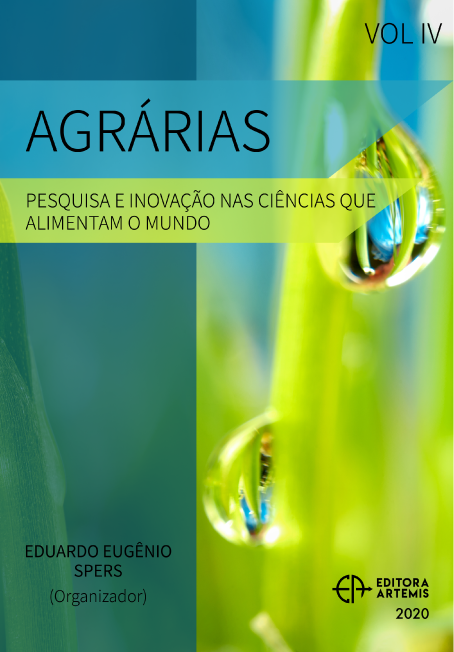
AVALIAÇÃO ECONÔMICA DE CULTIVARES DE MILHO CONVENCIONAIS E TRANSGÊNICAS NAS REGIÕES NORTE E OESTE DO ESTADO DE SÃO PAULO
Objetivou-se estudar os custos de produção e a rentabilidade da cultura do milho empregando cultivares convencionais e transgênicas na região Norte e Oeste de SP. Foram utilizados os dados médios de produtividade obtidos em ensaios regionais de cultivares de milho em cinco locais, composto por 15 cultivares convencionais e 17 transgênicas. Com o teste de Tukey a 5%, as cultivares foram alocadas em três grupos, classificados em alta, média e baixa produtividade.As estruturas de custo envolveram custo operacional efetivo (COE), e indicadores econômicos. Conclui-se, nas condições do presente estudo, que não houve diferença estatística entre as cultivares transgênicas e convencionais em termos de custo efetivo de produção.
AVALIAÇÃO ECONÔMICA DE CULTIVARES DE MILHO CONVENCIONAIS E TRANSGÊNICAS NAS REGIÕES NORTE E OESTE DO ESTADO DE SÃO PAULO
-
DOI: 10.37572/EdArt_2553112204
-
Palavras-chave: Zea mays L, produtividade de grãos, custo de produção, lucratividade e cultivares
-
Keywords: Zea mays L, grain yield, cost of production, profitability and cultivars
-
Abstract:
“More than 90% of the corn crop area in Brazil uses transgenics technology," but due to the breakdown of the pest resistance and significant increase in the price of seeds, it is necessary to make and economic comparison between transgenic and conventional cultivars. The objective of this paper is evaluate the costs of production and profitability of the corn crop using conventional and transgenic cultivars in the North and West of São Paulo. The average grain yield data obtained in regional trials of com cultivars in five locations were used, composed of 15 conventional and 17 transgenic cultivars. With the Tukey test at 5%, the cultivars were allocated into three groups, classified as high, medium and low grain yield. The cost structures involved effective operating cost (EOC) and economic indicators. The results showed that in the high and medium grain yield groups, the EOCs per hectare for the transgenic was higher than the conventional and, because the average grain yield of both were equivalent, the profitability index of the conventional was higher than the transgenic. In the group with low grain yield, the transgenic produced more, and even so the profitability indexes were very close (59.30% in the transgenic and 58.03% in the conventional). The biggest percentage difference in EOC occurred in the seed item. The variation in the cost of production per bag of corn in the conventional was R $ 16.31 (high), R $ 17.99 (average) and R $ 20.53 (low) and in the transgenic R $ 17.66 (high), R $ 19.51 (average) and R $ 19.91 (low). Under the conditions of the present paper it can be concluded that there was no statistical difference between the transgenic and conventional cultivars in terms of effective cost of production.
-
Número de páginas: 9
- Fernando Bergantini Miguel
- Aildson Pereira Duarte
- Rogério S. Freitas
- Ivana Marino Bárbaro - Torneli
- Ivana Marino Barbaro - Torneli
- Marcelo Ticelli

